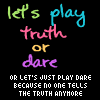by Susan Brooks-Young
The versatile projection technology could be the next recipient of that rarest of educational honors: ubiquitous classroom adoption.
IT’S NO EASY THING for a technology to go from introduction to universal adoption. And if trends over the last 200 years are any indicator, the honor is not eagerly doled out, no matter how useful the innovation is. It took nearly 50 years after their arrival in 1801 for chalkboards to become a classroom staple, paving the way for teachers to provide instruction to large classes, eliminating the need to handcopy materials for each student.
Since then, just one presentation technology has enjoyed the same level of acceptance: the overhead projector. And despite how overhead transparencies have made it practical for teachers to prepare notes and drawings ahead of time to project during class, it took 40 years to get the technology into their hands. Current presentation technologies far surpass overhead projectors, but none has seen ubiquitous classroom adoption.
Enter the document camera. This cost-effective, easy-to-use device works in conjunction with a projector, television, plasma screen, or monitor to display documents and 3-D objects. Capable of capturing images and video to upload to a computer for use in multimedia projects and web pages, some models even allow users to share the screen display or freeze and annotate images. More importantly, students of all ages can use document cameras to share their work. As a result, schools are purchasing them in increasing numbers.
The growing popularity of the device has not escaped the notice of education leaders in the state of Washington, where document cameras are now more widely used in classrooms than digital cameras. In fact, two well-established regional projects in Washington use document cameras in their professional development curricula. One project is for K-12 teachers, while the other targets secondary school math teachers. Each is designed to help participating teachers make better use of technology to impact teaching and learning.
The K-12 program is led by Debbie Tschirgi. In 2005-06, Tschirgi, the director of educational technology programs for Educational Service District 112 in Vancouver, WA, designed and launched a program called the Sustainable Classroom Project. She explains that the program is a response to the need for educators to “develop a replicable classroom model of technology integration that is sustainable and supports research-based instructional strategies.
Moree..
Saturday, June 16, 2007
Are Document Cameras the Next Big Thing?
Subscribe to:
Post Comments (Atom)






0 comments:
Post a Comment